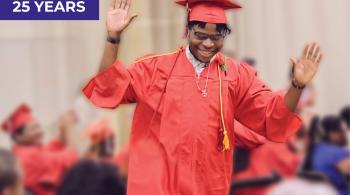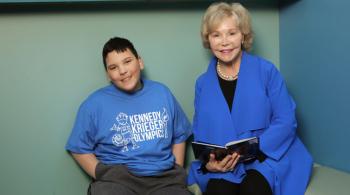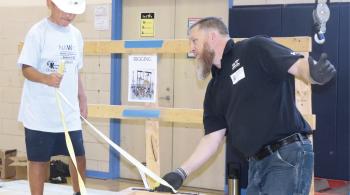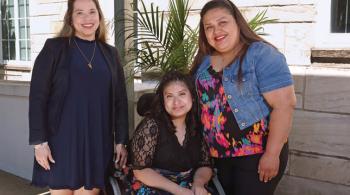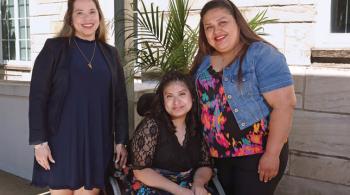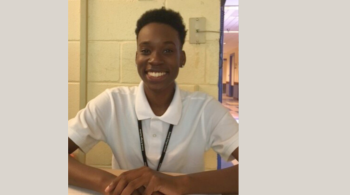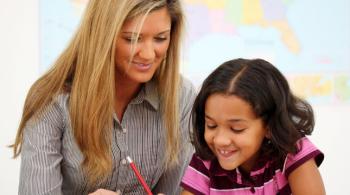Mikey loves keeping busy. He loves music videos and video games. He loves the rides at amusement parks and riding on airplanes. He loves to dance, and he’s fascinated by news tickers. He reads every word as it slides across the bottom of the television screen.
He’s quick, too. Every morning, when he gets to his classroom at Kennedy Krieger High School, he pulls out his binder and gets right to work, sometimes completing activities before his teachers have the next ones ready.
He thrives on routine, and on checking off tasks as he finishes them. He’s very curious: He loves walking through the school, seeing what everyone is up to as he heads down locker-filled hallways to the library, cafeteria or school store.
And he takes pride in himself and in his work. When another student receives praise for an activity or task, Mikey—not to be outdone—quickly finishes the same task with intentional perfection. The praise he receives encourages him to put his best foot forward as he starts his next task.
It’s the perfect school environment for Mikey, but it’s not how things started out.
Right Diagnosis, Right School
Mikey was diagnosed with autism when he was 7 and attending third grade at a public school in Maryland.
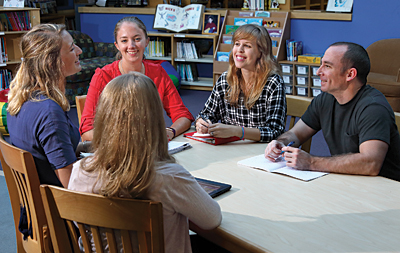
Initially after his diagnosis, the public school transferred him to a special education classroom, but Mikey, who was nonverbal at the time, needed more structure and one-on-one time with teachers. The school referred Mikey to Kennedy Krieger Institute, and he finished third grade at the Institute’s Fairmount Campus in downtown Baltimore.
The Fairmount school offers kids from kindergarten through the eighth grade a chance to get the education they deserve in a setting designed just for them. At first, Mikey was in a class of mostly semi-independent learners, but his new Fairmount teachers quickly noticed it wasn’t the right fit for him—Mikey didn’t like being corrected in front of everyone. His schoolwork and classroom behavior reflected his frustrations.
After a special meeting of teachers and specialists called together solely to discuss how to best help Mikey learn and thrive, Mikey joined teacher Kathryn Henry’s classroom.
At that time, Henry’s classroom was operating on a dyad system, and it was exactly what Mikey needed. In the dyad system, two students work side-by-side, alternating time with a teacher. Henry and her co-teachers placed Mikey in a dyad with another student who took correction well. A keen observer, Mikey noticed everything she did—correctly and incorrectly—and imitated her correct behaviors.
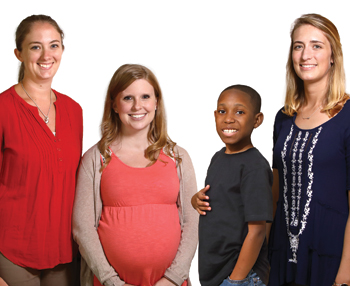
By instructing Mikey’s dyad partner, Henry and her co-teachers were teaching Mikey, too—and Mikey no longer had to feel embarrassed in front of his peers just for being corrected. A quick learner, he soon settled into a groove.
“It took the pressure off of him, so he could really start to learn,” Henry says. “I’ve never seen that before with any of my students.”
By the end of fourth grade, Mikey was doing amazingly well. His behavior was excellent, and he was even taking some feedback from his teachers. Mikey was learning and thriving.
“When Mikey joined my classroom, I would rarely see him happy,” Henry says. “But now, he smiles all the time. He has the biggest smile, and it was so cool to see that smile grow.”
Ultimately, Henry had to implement a special protocol—no running in class—because Mikey had gotten so happy, he sometimes started running laps around the classroom.
‘Proud’
Henry taught Mikey for his final two years at the Fairmount school. As part of the curriculum, Henry taught Mikey and his fellow classmates language arts, math and writing, and students received additional instruction on an individual basis. Mikey got to be very quick with math problems and anything relying on rote skills, Henry says.
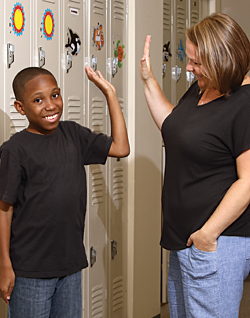
The Fairmount school takes an interdisciplinary approach to education, employing special educators, behavioral specialists, mental health professionals, occupational and physical therapists, speech pathologists, nursing staff members, and a neuropsychologist to ensure all students’ needs are met. Mikey met with his speech-language pathologist, Lauren Hoffman, three times a week to work on communication skills. >>
Initially, when Hoffman started working with Mikey, he was using low-technology visuals—pictures on paper. But, ever motivated by his peers, and seeing his new classmates at the Fairmount school using more sophisticated forms of communication, he started using an iPad program application to which Hoffman introduced him.
Using the application’s photo library and sentence formation software, Mikey started stringing together pictures and words, and then words with words, eventually forming full sentences with adjectives and verbs.
Soon, Mikey was no longer just responding to questions, but was actually initiating communication—as Hoffman says, “he was becoming more comfortable in his own skin.”
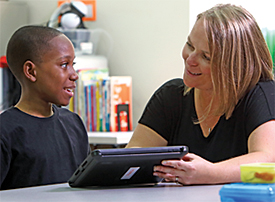
With Hoffman’s help, Mikey started saying a few spontaneous words, too. When he first said the word “proud” after completing a task correctly, Hoffman knew he’d made a breakthrough. “It meant he was starting to have confidence in himself.”
He even started communicating with another student using a similar communication application—a major step forward, since “it’s not often that our students show interest in communicating with other students,” explains Shelby Stevens, another one of Mikey’s teachers at the Fairmount school.
By the eighth grade, says Phylicia Baker, Mikey’s case worker during his last year at the Fairmount school, “he was feeling like the big man on campus.”
A Tremendous Turnaround
This past summer, Mikey started high school. Naturally, there was angst—just about every rising freshman experiences it. But because the Fairmount school works so closely with the Institute’s high school to ensure a smooth transition for ninth-graders, Mikey did just fine.
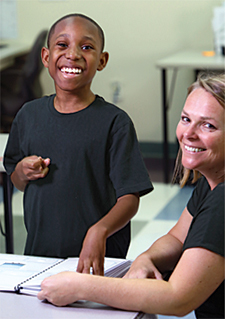
Mikey’s on track to receive a certificate of completion by age 21, and training in one of five job tracks: retail, hospitality, construction, horticulture or information technology, says Gabriela Bandi, his ninth-grade teacher.
A pro now with his communication device, Mikey hopes to get into the technology track, says his mom, Rheon.
“He’s an electronic gadgets guy,” she says, and his favorite video games employ a lot of action and strategy.
But whatever industry he, his teachers, therapists and family decide together is best for him, “I’m looking forward to seeing where that takes him,” Rheon adds.
Over the past few years, Mikey’s ability to communicate with his family through spoken words has increased dramatically, “although when he gets stuck, the iPad is always handy to help him express what he’s thinking,” Rheon says. She attributes his improved ability to communicate not just to the communication device, but to the therapies and education he’s received
at school.
“We’ve all benefited,” Rheon says. “Not just Mikey, but our family as a whole. Since he’s been at Kennedy Krieger schools, he’s just made a tremendous turnaround.”
To learn more about the Institute’s school programs, visit the Educational Programs page.



